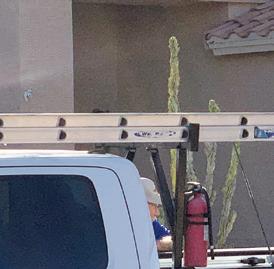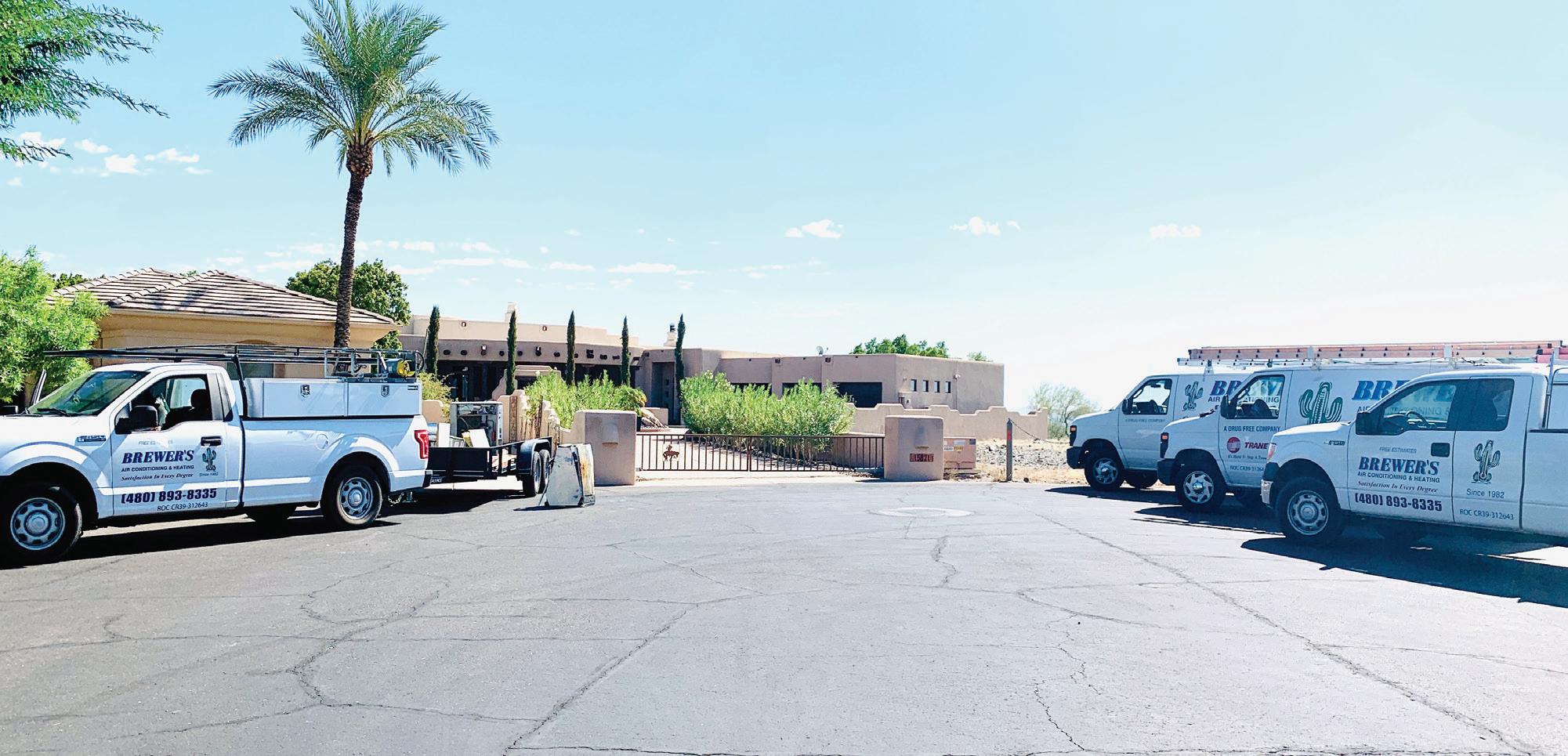

Inside This Week







Gilbert Council last week approved a slightly lower secondary property tax and a $2-billion spending plan with 43 new hires for the fiscal year beginning July 1 – but not without some bickering between the new and veteran members.
The budget comprises $1.4 billion in capital projects such as street and water system improvements and barely squeaked by passage due to opposition from the three new council members.
“I’ve struggled with this because this is a $2-billion budget,” Councilwoman Bobbi Buchli said. “I’ve been a council member for about five months now.
“I can’t justify in my heart to vote for a budget in this amount that I’ve had no input on and I’m not saying there’s anything wrong with it. It’s probably fine.”
Councilmen Jim Torgeson and Chuck Bongiovanni, who also took their seats in January, said they could not support a budget that they had no hand in shaping.
Torgeson said the year-long budget process doesn’t lend itself to full participation
for the council.
“There’re things where I look, some things that I feel are wrong,” he said. “And as a policy maker I’m still supposed to approve this. My problem with this budget is that I’ve had zero impact and I hate to make it about me but it’s really not about me.
“It’s about spending $2.049 billion for the residents of this town and I am not in-depth enough and have had no influence on how they’re represented in this process.”
Bongiovanni complimented staff for get-
see COUNCIL page 11

Dr. Lynette Charity has gone from putting people to sleep in the operating room to tickling their funny bones while on stage.
The 71-year-old Gilbert resident recently bested other amateur comedians in an elimination contest for “Funniest Comic in the Valley” hosted by Cactus Jack’s Bar & Grill in Ahwatukee and now moves on to the final round.
That round is at 7 p.m. July 11 at Cactus Jack’s, 4747 E. Elliot Road, Ahwatukee.
“Someone asked me, ‘How in the world do you go from that to that?”
Charity said. “Honestly, I was feeling

pretty depressed. When I turned 60, I’d been working as an anesthesiologist since I was 27.
“It was a long time and it wasn’t giving me the same energy, doing the same thing over and over again – sort of got into a rut.”
Charity said in her sixth decade of life, she had an epiphany – she was getting older and needed something but she was not quite sure what it was.
“I thought about it for a little bit,” she said, finally recalling that a patient once remarked how funny she was.
She said she often used humor on her younger patients who “needed someone who was less stoic.”
see COMIC page 8
























CONTACT INFORMATION
Main number: 480-898-6500 | Advertising: 480-898-6559
Circulation service: 480-898-5641
Publisher: Steve T. Strickbine
Vice President: Michael Hiatt
ADVERTISING DEPARTMENT
Display Advertising: 480-898-6309
Classifieds/Inside Sales: 480-898-6500 | classifieds@timeslocalmedia.com
TJ Higgins | 480-898-5902 tjhiggins@timeslocalmedia.com
Steve Insalaco |480-898-5635 sinsalaco@timeslocalmedia.com
Advertising Sales Executive: Jane Meyer | 480-898-5633 jane@timeslocalmedia.com
NEWS DEPARTMENT
Executive Editor: Paul Maryniak | 480-898-5647 pmaryniak@timeslocalmedia.com
Managing Editor: Cecilia Chan | 480-898-5613 cchan@timeslocalmedia.com
Reporters: Ken Sain | 928-420-5341 ksain@timeslocalmedia.com
Get Out Editor: Christina Fuoco-Karasinski | 480-898-5631 christina@timeslocalmedia.com
Sports Editor: Zach Alvira | 480-898-5630 zalvira@timeslocalmedia.com
Photographer:
Dave Minton | dminton@timeslocalmedia.com
Design: Veronica Thurman | vthurman@timeslocalmedia.com
Design/Production Supervisor Courtney Oldham | production@timeslocalmedia.com
Circulation Director: Aaron Kolodny | aaron@phoenix.org The
To
The Di Bella Family wants to put single-family homes, two apartment complexes totaling 628 units and commercial development on roughly 75 acres at the northwest corner of Power and Williams Field roads.
The land is in Maricopa County’s jurisdiction but the family is now gathering signatures of surrounding property owners on a petition to annex into the Town of Gilbert. Town Council last week held a public hearing for input, kicking off the annexation process for the mixed-use Bella Storia development.
“The Di Bella Family, they’ve owned the property for quite some time,” said senior planner Keith Newman at the June 6 council meeting. “There are some existing buildings out there. There’s an old commercial site and the building on the corner was an old Cosmo’s Restaurant.”
Cosimo and Mary Di Bella, which operated the Italian restaurant for 32 years until it closed in 2002, started buying the land around the eatery in 1966, which eventually resulted in the parcel proposed for annexation.
Newman said the family has also submitted concurrent applications to amend the town’s General Plan and to rezone the site, which is currently zoned county RU-43 for residential use.
The proposed rezone calls for 30.94 acres for multifamily, 24.94 acres for single-family detached housing, 7.25 acres for single-family attached homes and 16.58 acres for general commercial, according to Newman.
According to staff, the pro-
posed project is anticipated to increase the projected water demand on the site by approximately 200.46 acre-feet per year.
“We are in the very beginning stages,” Newman said. “We’ve reviewed the General Plan and rezone two times now.
“I don’t know when they’re going to resubmit and when this is going to come back before you for GP and rezone and for the annexation’s final hearing. But we are progressing with the applicant and the project (and) we’ve been fairly happy with the project so far.”
Newman said the annexation, rezone and General Plan amendment are likely to be on the same agenda in the future.
Although the density for the requested residential zoning would allow for up to 25 dwelling units per acre, Newman said the proposed density would be about 1415 units per acre.
The Bella Storia project first came before the Planning Commission at a study session last October. The annexation application was in the town’s system for a while for review but not until the last 45 days or so did staff receive the necessary information from the applicant to be able to officially start the process, Newman later said.
Originally the development called for
851 apartment units, 238 duplexes and single-family homes and 104,670 square feet of retail.
At the time the commissioners and staff indicated they did not support the project’s request for over a dozen deviations, including for building height, open space and building separation.
Councilman Jim Torgeson asked if the family could annex the land first without the rezone and General Plan amendment.
“They could annex. Yet it could all be commercial,” he said. “There’s no guarantee of zoning this to anything.”
Newman said technically the family could annex separately but staff would likely not support it.
“Supporting this annexation is that they have these companion applications for General Plan amendment and rezone,” Newman said. “I can’t stand up here and tell you today we support an annexation without seeing the actual land uses that are going to be proposed.
“Technically in theory they could do that but they have chosen not to do that. They are going to move forward with one large project, master planned-type community so we are grateful they are doing that.”




















It remains unclear why Dr. Dawn Foley unexpectedly resigned as superintendent of Higley Unified School District with two years left on her contract.
The Governing Board voted 4-0 last week to accept Foley’s resignation, effective June 30, and announced that Associate Superintendent Sherry Richards will serve as the lead administrator.
“We would like to extend our heartfelt gratitude to Dr. Foley for her dedication during her time with us, which led to remarkable achievements for our district,” read the statement HUSD released shortly after the June 6 vote. “As she moves forward, we wish her the very best in her future endeavors.”
The district said it will be conducting a search for a new superintendent.
How the search will be done is up to
the board and “discussions are still ongoing,” said spokeswoman Teresa Joseph.
The board met for nearly five hours behind closed doors June 5 before approving Foley’s resignation and her performance pay. Foley was not present at the meeting nor did she attend the regular board meeting the following day.
Gilbert Sun News was told by the district that Foley was not available for an interview.
Board members Amanda Wade and Michelle Anderson declined to say why Foley resigned. Board members Anna Van Hoek, Kristina Reese and President Tiffany Shultz attended the executive session and the following brief meeting via telephone. Reese left the discussion after executive session and did not cast a vote.
The board appointed Foley superintendent in July 2021 after she had been serving unofficially in that capacity
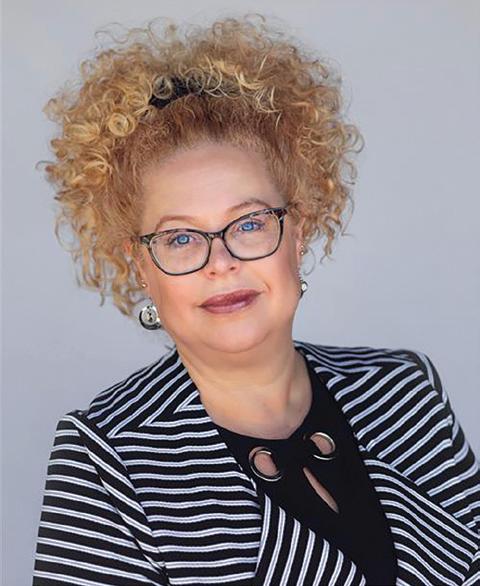
since the year prior when then-Superintendent Michael Thomason abruptly resigned. Thomason at the time said he wanted to focus on “family and future endeavors.”
Foley’s original contract was to end June 30, of this year but the board amended the contract in July 2022, extending it to June 30, 2025.
Her annual salary was $208,650, according to Joseph.
Foley first came to HUSD in 2008 where she worked for six years as the director of curriculum and instruction before leaving for Mesa Public Schools to be the director of teaching and learning.
She left that position in 2019 to return to Higley to be the associate superintendent of K-12 Educational Services.
During her short tenure, Foley helped steer the district through the pandemic and notably saw two bond elections fail at the ballot box– a $95-million measure in 2021 and a $77.2-million bond in 2022.
The district has 16 campuses in Gilbert and in Queen Creek and has about 12,000 students.
Higley Unified School District is looking to impose a one-time property tax increase in order to raise $1.5 million to pay for traffic improvement projects for the next three to five years.
The levy is part of the proposed $125-million Fiscal Year 2024 spending
plan the Governing Board approved on June 7, with final adoption set for June 28. Property owners in the district’s boundary would be affected.
“The need stems from improving public rights-of-way,” said CFO Tyler Moore. “The need to improve traffic flow to come off of the public streets in the town. Neighbors in the area who don’t have kids are affected by our schools.”
Moore first broached the idea in Feb-
ruary of implementing an adjacent ways tax. The levy, allowed by state statute, does not need voter approval and finances improvements on alleys and thoroughfares such as a public road adjacent to district property.
HUSD last resorted to this levy in 2016 and generated $3 million with a current balance of $1.1 million. Moore said the district spent close to $800,000 just this year in adjacent ways money for projects
to improve traffic at Higley High and San Tan Elementary.
“As you know traffic at Higley High’s parent drop-off and pick-up is hectic,” he said. “We’ve had accidents and a number of different incidents over there so we are making improvements for the better good of people traveling down Pecos and Recker.
“We do have a number of other proj-
















Mesa, AZ - When it comes to chronic pain and/ or neuropathy, the most common doctor-prescribed treatment is drugs like Gabapentin, Lyrica, Cymbalta, and Neurontin. The problem with anti-depressants or anti-seizure medications like these is that they offer purely symptomatic relief, as opposed to targeting and treating the root of the problem. Worse, these drugs often trigger an onset of uncomfortable, painful, and sometimes harmful side effects.
The only way to effectively treat chronic pain and/or peripheral neuropathy is by targeting the source, which is the result of nerve damage owing to inadequate blood flow to the nerves in the hands and feet. This often causes weakness and numbness.

(above 95% nerve loss is rarely treatable)
3. The amount of treatment required for the patient’s unique condition
Aspen Medical in Mesa, AZ uses a state-ofthe-art electric cell signaling systems worth $100,000.00. This ground-breaking treatment is engineered to achieve the following, accompanied by advanced diagnostics and a basic skin biopsy to accurately analyze results:
1. Increases blood flow
2. Stimulates and strengthens small fiber nerves
3. Improves brain-based pain
The treatment works by delivering energy to the affected area(s) at varying wavelengths, from low- to middle-frequency signals, while also using Amplitude Modulated (AM) and Frequency Modulated (FM) signaling.
It’s completely painless!
THE GREAT NEWS IS THAT THIS TREATMENT IS COVERED BY MEDICARE, MEDICAID, AND MOST INSURANCES!!
Depending on your coverage, your peripheral neuropathy treatment could cost almost nothing – or be absolutely free.




As displayed in figure 1 above, the nerves are surrounded by diseased, withered blood vessels. A lack of sufficient nutrients means the nerves cannot survive, and thus, slowly die. This leads to those painful and frustrating consequences we were talking about earlier, like weakness, numbness, tingling, balance issues, and perhaps even a burning sensation.
The drugs your doctor might prescribe will temporarily conceal the problems, putting a “BandAid” over a situation that will only continue to deteriorate without further action.
The number of treatments required varies from patient to patient, and can only be determined following an in-depth neurological and vascular examination. As long as you have less them 95% nerve damage, there is hope!










Thankfully, Mesa is the birthplace of a brand new facility that sheds light on this pressing problem of peripheral neuropathy and chronic pain. The company is trailblazing the medical industry by replacing outdated drugs and symptomatic reprieves with an advanced machine that targets the root of the problem at hand.

Effective neuropathy treatment relies on the following three factors:
1. Finding the underlying cause
2. Determining the extent of the nerve damage
Aspen Medical begins by analyzing the extent of the nerve damage – a complimentary service for your friends and family. Each exam comprises a detailed sensory evaluation, extensive peripheral vascular testing, and comprehensive analysis of neuropathy findings.
Aspen Medical will be offering this free chronic pain and neuropathy severity evaluation will be available until June 30th, 2023. Call (480) 2743157 to make an appointment.
Due to our very busy office schedule, we are limiting this offer to the first 10 callers. YOU DO NOT HAVE TO SUFFER ANOTHER MINUTE, CALL (480) 274-3157...NOW!!
We are extremely busy, so we are unavailable, please leave a voice message and we will get back to you as soon as possible.


COMIC from page 1
Charity bounced her idea of becoming a comedienne to a career coach who advised her, “‘If you want to do comedy, think of a back-up plan and make sure you can get up on stage, stare at people and not poop in your pants.’”
She hired another coach and “started going on stage when I was 60,” she said.
“The first time I stood up on stage, I had to have two glasses of wine for liquid courage and did my set,” Charity said. “Some of my jokes hit and some didn’t. But just being on stage, I was on fire.”
A couple days after her inaugural stab at comedy, Charity was back in the surgical room introducing herself when the patient asked if he didn’t just see her do her act on stage.
“I put him to sleep and when he woke up, he said, ‘She’s good and she’s funny,’” Charity recalled, adding that validation confirmed she could actually do stand-up.
To shore up her stage presence, Charity joined Toastmasters, which helps people improve their public speaking and communication skills.
“I started working with them,” she said. “Someone said, ‘you’re a good public speaker, you should do speech contests.’ I started competing and winning.”

In 2014, Charity represented District 9 of Toastmasters International in competing in the semi-finals of the World Championship of Public Speaking held in Kuala Lumpur, Malaysia. She won a third-place trophy for her speech.


“I decided maybe I’ll do comedy and public speaking will be something I could do professionally,” she said.
She embarked on public speaking engagements, tackling serious subjects like physician burnout, suicide and depression.
“I almost died by suicide,” Charity shared. “There’s all that stuff that goes on behind medicine that nobody sees. I did a TED talk about it and was going to different medical groups talking about it.”
With such somber subjects, Charity punched up her talks with levity.
In early 2021 during the pandemic, Charity hung up her stethoscope for good.
“What I really wanted to do is be a

stand-up comic,” she said.
She took her act on the road to cities, including New York, Los Angeles and San Francisco. She was the headline act in Washington State, where she previously lived and practiced medicine for over 35 years.
“I got paid, which was great,” she said, noting that she doesn’t do it for the money. “I know I do it for my mental health and I know all the statistics about laughter and humor and (their impact on) people’s lives.
“I’m doing something to elevate my mood and some people in the audience may identify with some of my stuff and it may make them feel better, too.”
in the South.
Charity wasn’t one as a child dreaming one day of standing in front of a mike, entertaining audiences for chuckles.
Her early years were a far cry from that spotlight.
“There was no time to be funny,” she said.
Charity grew up in the segregated South and, according to an interview she gave to her alma mater, she forged her mother’s signature to attend a white high school in Virginia.
“I was one of the first blacks to integrate in a white high school,” Charity said. “People would throw dog poop at me.”
She excelled in school and received a four-year academic scholarship to Chatham University in Pittsburgh, Pennsylvania, where she double majored in biology and chemistry.
“I was accepted to Tufts (University School of Medicine) in my third year in college,” Charity said.
Although she grew up in the South, she said Boston at the time was wrestling with desegregating its public schools by forced busing, which led to violent protests.
“It was scary to be black at the time even though I was in med school,” she said. “I would have patients who said they didn’t want me to touch them.
“But what doesn’t kill you makes you stronger.”
After her first year at Tuft’s medical school, she had to do an internship and although Beth Israel Deaconess Medical Center accepted her, she decided not to pay Boston rent and instead live at home in Norfolk, Virginia, where she did her internship.



She sometimes wears her hospital scrubs while performing as her onstage persona Dr. Charity. She gleans material from her years as a doctor and from her family life.
“As you know I’m an anesthesiologist,” she would tell an audience. “And becoming an anesthesiologist was hard. Four years of college, four years of medical school, four years of residency training and 12 years as a slave.”
The joke referenced the 2013 Hollywood movie “12 Years a Slave,” based on a true story of a freeborn black man kidnapped from New York during the antebellum years and sold into slavery
That’s where she met her future husband, Sid Sado, who was doing his residency.
The two dated and one year later they married and have been together for 43 years.
They have two adult children, Michael, who lives in San Francisco and works for Google and Christina, who lives in Gilbert and has a 5-year-old son, Cooper.
Charity said she doesn’t test her see COMIC page 10





COMIC from page 8
jokes with her husband, whom she called “a nerd.” He is a retired critical care physician.
“Sid doesn’t get all the jokes,” she explained. “It flies over his head.”
For instance, early in their relationship, she took Sid to a soul food restaurant she frequented.
“I had never brought a white dude,” she explained.
After they were seated, the waitress asked what they would like to eat and Sid said, the fried chicken, Charity recounted.
“I bet you want the dark meat,” the waitress cheekily said.
Sid responded, “I do, yes because dark meat tastes so good.”
“He didn’t get it,” Charity said of the exchange. “That’s the way he’s been.”
Charity instead practices her jokes with an online Zoom community of like-minded individuals.
“We go on every day, one hour in each room working on one joke at a time, six minutes and get feedback,” she said. “I’ve been doing that for over a year and the jokes get better.”
Charity said her and Sid’s families provide ample fodder for her one-woman show.
For instance, her father-in-law was a racist and tried to talk Sid out of marrying her, according to Charity.
“He had actually gotten shot by a black guy in D.C. when he and his wife had a mom-and-pop store there while my husband was going to Georgetown (University),” Charity said.
She incorporated all of that into her stand-up.
She set up for her audience at a show in LA that her Turkish husband had to talk to his dad about marrying her and that she went with him for moral support but stayed outside in the bushes listening intently to the conversation.

“Dad, I’m getting married.”
“Is she Catholic?”
“No dad.”
“Is she Jewish?”
“No dad.”
“Thank God!”
“She’s Baptist and she’s black.”
“Does she know who shot me?”
“Dad, that was a long time ago. She wasn’t there.”
“I don’t understand. She’s black. He was black. She should know him. You go ask her.”

Charity told the audience that when she heard what her future father-inlaw said she thought, “Oh, my goodness that’s the most racist thing I’ve ever heard.”
She then paused for the audience and said, “But I knew him…his name was Clarence.”
Not to give her own family a pass, Charity said they, too, were “prejudiced.”
“My father-in-law was not a nice man but my father had he been alive

was not a nice man,” Charity said. “He couldn’t stand white people.”
Because Charity’s father was dead, Sid went to her grandfather to ask for her hand in marriage.
Her grandfather’s response was, “‘I don’t want my granddaughter to marry no honky,’” she said, having to explain to Sid the derogatory term.
Charity said for a long time her mother opposed the two dating each other.
But “when she found out she could talk about her ailments to my husband, who was in internal medicine and then intensive care, he became blacker and blacker,” Charity said. “She ended up loving him until she died.
“We have two sides of families and it’s comedy gold between those two,” she said. “I tell serious stuff in the form of humor. It’s been cathartic for me to share some of this.”
Her favorite comic is Jim Gaffigan, whom she looks to for pointers.
“I love him because he’s clean,” Charity said. “I look at his stuff over and over again when I’m talking about family – how can I talk about my daughter in a way that’s not demeaning.”
Charity said she used to like Wanda Sykes until her humor “became dirty over time.”
“I’m not much into Kevin Hart or Chris Rock,” she said. “I don’t like men comics who demean women and call them nasty names.”
Charity has no intention of slowing down any time soon on the comedy circuit.
“I don’t think I’ve peaked yet,” she said. “I have yet to do a Netflix special.”
For Charity, segueing into comedy is a perfect ending to her medical profession.
“Medicine is your calling,” she said. But “when I talk to people, laughter is truly the best medicine.”


COUNCIL from page 1
ting the freshman lawmakers caught up on the budget and said, “You have some council members that are different kind of council members and want to be more involved.”
He said it’s his fault if he didn’t express that clearly early on and as a newly elected official, he didn’t know that he could intervene at any point in the budget process.
“I just thought we would be much more involved and I felt like I didn’t have a voice to make any kind of suggestions for the people I represent,” Bongiovanni said. “I want to be involved ….I don’t want to participate, I want to just observe it. I want to know more about it.
“I don’t even think I received the full budget. I mean. I’m sure it’s a couple thousand pages but our meetings (agendas) are a couple of thousand pages and we get those every two weeks. So again, it’s nothing that the staff has done. I think we just effectively didn’t communicate what we thought was going to happen.”
After the three spoke, Councilwoman



Yung Koprowski gave a sharp rebuke, saying she was “extremely frustrated and disappointed” by their comments.
“You were elected into this position to do a duty to serve in this role,” Koprowski said. “You’ve had over two months to understand the budget process and what goes into it.”
Koprowski noted that the town is “extremely responsible in the budget process” and that Gilbert is one of the only municipalities in the region that budgets its full five-year CIP in the first year –thus the high budget figure.
“I ask you tonight to take on your responsibility as a council member and make a vote in this process because the information has been presented,” she said. “I understand that you feel like you have not been a part of the process but this is the process.
“The council sets policy on the level of service that we provide to our citizens. We set that policy, the town staff identifies the resources needed to provide that level of service.”
Buchli said no one on the dais called the Town of Gilbert irresponsible and
that she was a bit offended Koprowski alluded to it.
Mayor Brigette Peterson said previous councils set policies that allow staff to bring forward the best budget possible.
“I’ve been doing this now since 2015,” Peterson said. “My first year I was five months in just like the rest of you – same process then that it is now.
“I’m not saying that things can’t be maybe changed, modified. If we have a new council and people want to see things done a little bit differently, I’m always open for suggestions but to come in here this evening is very disappointing from my perspective.”
She reminded council members that they’ve had ample opportunity to meet one-on-one with Finance Director Kelly Pfost and that there were a special budget study session, retreats and a preliminary budget meeting in May.
“The preliminary budget passed 7-0 with no conversation, hardly no conversation, hardly no questions, hardly no nothing,” she said, adding:
“We’ve all been new. We do the best that we can with the information that we
have at hand. I really am really quite bewildered as to how we got here this evening.”
Bongiovanni said he understood the mayor’s frustration.
“If no questions were being asked by new council members, I guess I would have asked him, ‘Are you getting everything you need? How can I help you?’” he said. “But that didn’t happen so that’s why I think we’re here because we just didn’t have a path to go on that we totally knew and I know next year will be completely different.”
Peterson responded to Bongiovanni by citing his personal business knowledge.
“You run multi-million dollar companies. I didn’t know what you don’t know about budgets,” she said. “And you’ve all said that you have budget experience. That’s why I didn’t think you had any questions.
“At the study session I asked over and over again if anyone had any questions. I asked at the preliminary meeting are
see COUNCIL page 12



there any other topics, any other questions. I asked over and over again because I was surprised that people didn’t have questions.”
Vice Mayor Kathy Tilque said that it appeared that the new members felt that the council needed to evaluate how the process works in the future so “that there are some additional touch points for us to provide some input maybe earlier in the process.”
She suggested closing the conversation by agreeing to look at the process for future budgets.
“The No. 1 priority for this council is to pass a budget so that we can continue the work and the services that we provide,” Tilque said. “Not passing a budget is not an option.”
Torgeson said he’s spoken with many former Gilbert council members and “consistently five out of the six very much felt that the budget was presented as take it or leave it.”
“They didn’t feel that they had enough input yet they felt bound to move forward,” he said.
Tilque moved to approve the budget, which passed 4-3 with Bongiovanni, Torgeson and Buchli dissenting.
Getting the tax levy passed to pay off bond debt was no easy feat either.
Staff had been recommending setting the secondary property levy at $31.6 million, keeping the tax rate at 0.99 per $100 of assessed value but Torgeson has been pushing to lower it to 0.98. That would mean $265,000 less for the town.
Torgeson said staff didn’t give him the information he needed in advance so he could present it to other council members at the preliminary budget meeting and reach a consensus to lower the rate.
As such, he said, he didn’t get to fully participate on the matter and “for that reason alone I feel that we should reduce the secondary tax.”
Peterson said that Pfost had sent out the information he needed to all the council members.
“If I remember correctly at the preliminary meeting you didn’t bring it up for a discussion,” Peterson said. “Actually, you didn’t bring anything up for discussion that evening.”
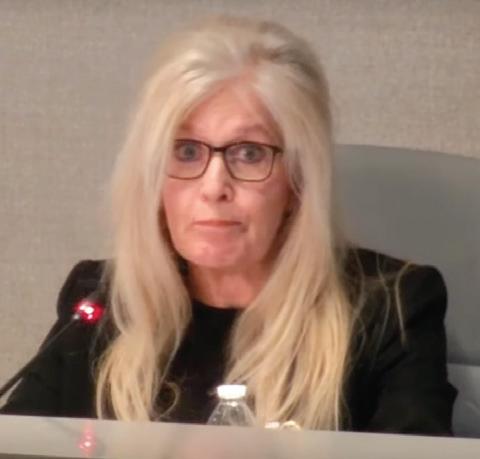


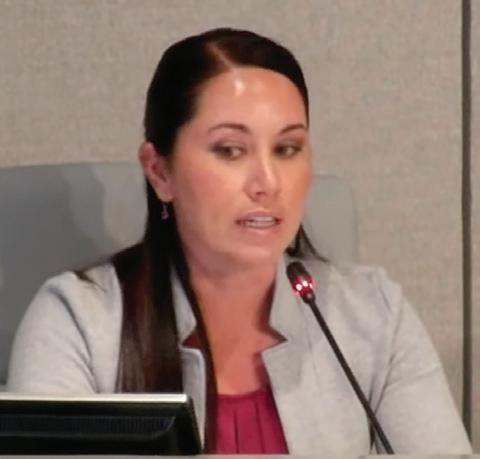

Pfost said if council decided to lower the rate, the town would still have enough to make its debt service payments next year.
“It does change the amount that we have available for debt into the future,” Pfost said
Peterson added that the Town’s AAA credit rating would drop if it doesn’t collect enough money to pay its debt.
“We also are seeing right now more residents that aren’t necessarily paying their taxes,” Peterson said. “So we have to be prepared for that also.”
Tilque said lowering the rate would mean a savings of $2 a year to the average homeowner.
“It always sounds great to reduce taxes for somebody,” Tilque said. “But when you talk about $2 a year and the impact that has on our streets and all of these other things that we’re providing that we’re paying debt on, that we have bond authorization, I feel like it’s not enough
money – $2 a year to put ourselves in a financial situation that we fall below our financial policy limits that we have in our funds to ensure that if people don’t pay their taxes, that we can still pay our debt.”
She said with the escalating construction costs, the town would be putting itself in the position “that projects will not get done for that $2 a year.”
She said that during the study session, lowering the rate was brought up as an option and “if the council members felt that that was really a great idea, that’s when everybody should have spoke up and said, ‘yes, let’s move forward.’”
Also, no one else on council spoke up about it in the following preliminary budget meeting, she added.
“I feel like we’ve had three opportunities and none of the other council members said, ‘yes, lets make that a priority,’” Tilgue said.
Councilman Scott Anderson said he
did indicate an interest in Torgeson’s proposal and that cutting taxes in Gilbert was not unprecedented as council reduced the bed tax a few years back.
“It didn’t mean a whole lot,” Anderson said. “But it was great PR to give some money back to the citizens and I think this amount is small enough that there’s not going to be a significant impact. It certainly can be evaluated again next year but I think it’s something that would gain a lot of mileage considering some of the things have been going on in the community and what it would do for us.”
Peterson said she would agree with Anderson if the town was actually doing something that was going to have an impact.
“This isn’t going to lower anyone’s tax bill in reality,” she said, adding that she wasn’t advocating for any position on the issue. “Your evaluation of your home is going up 5% no matter what so your tax bill is constantly going to increase. People aren’t going to see a difference in their tax bill.”
Torgeson said collecting $265,000 less was a small number and “it’s not truly putting us in any great danger of anything. It’s not going to bankrupt this town or make us default on our bonds at that smaller number.”
Pfost said lowering the rate would “make a difference in how much capacity we have or how fast we could repay debt, how much interest we would pay in any future debt that we might need for future projects.”









An on-duty accident that resulted in a severe brain injury brought a cruel end to Sean Stoddard’s 13year career as a Mesa police officer three years ago.
And while he is still recovering, the injury didn’t stop the Army combat veteran and Mesa native from giving back.
Still president/CEO of a nonprofit called The Archangels that he started in 2017 to help veterans and first responders, Stoddard appeared June 6 at a press conference for a different kind of giving back.
He was there at the request of the Maricopa Association of Governments to call motorists’ attention for the need to properly secure loads they’re carrying on their vehicles.
While a distracted driver of an SUV was directly responsible for slamming into Stoddard’s stopped patrol car in August 2020 on the US 60 near the Higley

Road exit, he would not have been there had he not parked on the berm to pick up a ladder that another careless motorist let fall from a never-identified vehicle.
Last week, with the mangled wreckage of his police car piled on a flatbed behind him, Stoddard echoed reminders to motorists to secure their loads before they take off.
Stoddard was deployed by the Army for four tours – two in war-torn Iraq and Afghanistan.
But he barely survived the accident, sustaining severe brain trauma.
“I wasn’t able to walk or talk and I was in a wheelchair for a while,” Stoddard said. “They had to reteach me everything: teach me colors, shapes, numbers, letters, everything. And I’m still in therapy. Years later.”
Stoddard served Mesa Police in a variety of capacities during his years on the force. He was aa patrol officer, trainer and school resource officer.
“My time as a civilian law-enforce-




ment officer unexpectedly and heartbreakingly ended after being hit on the freeway by a distracted driver,” he says on his Linkedin profile.
“Although I am saddened that my retirement came unexpectedly and earlier than I would have chosen, I have an attitude of gratitude.”
He earned both a bachelor’s and a master’s degree while working for Mesa PD and provided the context of the tragedy that can happen to patrol officers and civilian motorists alike when thoughtless people fail to ensure their loads are securely fastened.


less voters are allowed the opportunity to vote on a proposed extension of the tax.
Right now legislation to put an extension on the ballot is tied up by GOP lawmakers who say too much of that tax’s revenue is devoted to mass transit and not enough to road construction and expansion.
Greg Byres, Arizona Department of Transportation engineer and deputy director for transportation, said his colleagues are sometimes stunned by the objects that fly onto the freeways.








In the past year alone, nearly 900 crashes on Arizona freeways have resulted from flying debris from unsecured loads and 23 fatalities have been recorded in the last 10 years.
“We saw more than 800 debris-related crashes last year in the Maricopa region,” said county Supervisor Jack Sellers, chair of MAG’s Transportation Policy Committee and former state Transportation Board member. “These crashes are preventable by securing your load and properly maintaining your vehicle.”
Sellers noted that funding for litter sweeping and pickup is currently at risk.
Maintenance activities are funded through the half-cent sales tax for transportation, which will expire in 2025 un-
“Swimming pool slides, refrigerators, toilets, furniture — ADOT crews have removed incredible things from freeway lanes,” Byres said. “Items that tumble onto freeways can severely damage vehicles that are moving at freeway speeds and can be deadly for the people in those vehicles.”
State police officers are often on the front lines of road debris crashes.
Department of Public Safety Lt. Col. Deston Coleman said debris poses “a threat to first responders and highway workers when they have to enter traffic to remove the items.
“These risks are completely preventable by taking the time to properly secure your load from spilling or falling out of the vehicle.”’
“PAD is often called the silent killer because you may have it and not even know,” says Dr. Joel Rainwater, chief medical officer of Comprehensive Integrated Care (CiC). The reason it’s sometimes missed is because people dismiss the symptoms of this dangerous disease as ‘just a sign of getting older’. But it’s not. “It’s not normal to have difficulty walking to your mailbox, it’s not normal to have constant leg pain or cramping,” says Rainwater, “That’s not normal aging, it could be a sign of PAD.”
PAD (peripheral artery disease) is a circulation disorder and those with it are at a much higher risk of heart problems and death from heart attack or stroke. “If there’s poor blood flow to your legs and feet, you’ll have pain, cramping or wounds that won’t heal,” explains Rainwater. “If you ignore these signs, it may lead to an amputation. If you get an amputation because you have PAD, your life expectancy is worse than if you had breast cancer or lymphoma. PAD is no joke.”In some cases, people have been diagnosed with neuropathy. The symptoms of neuropathy and PAD are very similar and include difficulty walking without taking a break, burning, tingling, numbness and/or pain. “When I see a patient who has been told they have neuropathy and they’ve been maximized on medication that’s not working, I know there may be something else causing it and one of the big, notorious offenders in that scenario is PAD,” says Rainwater.
PAD is caused by the buildup of fatty material inside the arteries. This buildup occurs gradually over time and


Tell neuropathy pain, “later alligator.”
hardens into plaque inside the artery. This condition is known as atherosclerosis. Sometimes, it’s called “hardening of the arteries.” No matter what you call it, this plaque causes a narrowing of the passageway, restricting the amount of blood that flows throughout the body.
Without an adequate blood supply, your body can’t get the oxygen and nutrients it needs to maintain healthy legs, feet and toes. “This is something we can fix,” explains Rainwater. “The good news about PAD, is that there’s hope. There is treatment and it’s excellent, it’s been one of the biggest success stories in all of medicine.” Patients are able to get back on their feet and everyday living with almost no downtime, no stitches and no overnight hospital stay. Medicare as well as most insurance plans will cover treatment.
Dr. Rainwater’s focus is on teaching people to recognize PAD and take action. “I’m here to tell patients that there are options, all they have to do is ask. They might have to ask a different doctor, but they don’t have to live with the idea that they’re going to suffer for the rest of their life,” says Rainwater. His best advice, “Go look for answers.”
If traditional neuropathy treatments haven’t given you the pain relief you’ve been seeking, it’s time to start asking questions.
YES / NO
Could I have been misdiagnosed with neuropathy?
If I do have neuropathy, is poor circulation making my symptoms worse?
Is medication the only option to treat neuropathy pain?
If you don’t know the answer to these questions it’s time to start asking the doctors at CiC questions about how we can treat your symptoms in the comfort of one of our Valley wide locations.
Call CiC today to schedule an appointment with one of our specialists.
Koprowski said she didn’t support the lower rate. She called it the wrong step to take and an inappropriate last-minute change.
Bongiovanni said he also was interested in lowering the rate but didn’t know when to “put that into effect or didn’t have direction when we can make changes itself or request changes to the whole budget process to begin with.”
Tilque said the council’s responsibility is ensure the town funds its projects and pays the debt back and as quickly as possible to save taxpayers dollars.
“I don’t believe that it’s our responsibility to make decisions for the optics,” she said. “Nobody’s going to see it in their tax bill.”
Tilque made the motion to approve staff ’s recommended tax levy of $31.6 million.
Torgeson, however, amended the motion to $31.3 million, which was seconded by Bongiovanni.
The vote passed 5-2 with Tilque and Koprowski voting no.
Higley Unified School District Board last week approved the purchase of physics textbooks for middle school students despite pushback from one board member.
The board agreed to buy from Savvas Learning Co. digital and print editions of “Conceptual Physics” for 230 students taking honor science. The annual cost is $36,570 for the five-year adoption cycle for a total $182,850. McGraw Hill was the other bidder.
“My concern is lot of these educational companies are choosing to take political stances,” said board member Anna Van Hoek, who was endorsed by the Purple for Parent conservative parental rights last November.
“I’m sure we’ve all seen what’s been posted on social media is the fact that both McGraw and Savvas support what is called culturally responsive learning

initiatives, which ultimately is CRT.”
CRT or critical race theory contends racism systemically shapes American society.
Van Hoek was the sole dissenter while President Tiffany Shultz, Vice President Michelle Anderson and board member Amanda Wade voted for the textbook. Board member Kristina Reese was absent.
The textbooks went on display at the district office from March 1 to June 7 for community feedback. An open discussion and a feedback review with the public were both held in May.
New science standards introduced in 2018 prompted the need for the textbooks, said Associate Superintendent Sherry Richards.
“Involved in these standards was a change in the way we actually teach science,” Richards said. “It went from learning concepts and vocabulary to actually doing the science. Our kids really need to understand science and engineering
processes, practices like how do you make a model, analyze a graph or data or perform an investigation to answer a problem.”
Van Hoek had concerns.
“There’s a lot of things in the book that could go in certain directions when it comes to science,” she said, listing climate change, oil drilling, gas and electricity. “Lot of things within science can be made political.”
“All of our kids come to this district. … But pushing political ideologies on them is where that line needs to be drawn. ”
Van Hoek said she wanted to ensure that the district is sticking to core subjects and students are succeeding in them.
“So, it does greatly concern me where these companies are choosing to go,” Van Hoek added. “And the community is concerned about that as well. The community wants to ensure their tax dollars
see BOOK page 18
It’s hard to prepare for the words, “You have cancer.” And when you hear them, it feels like a million questions are racing through your mind. What’s next? Who do I call? Where do I go? We have answers for you. We’ve been training for this moment, so we can be there the second you need us. Let’s take on this diagnosis together.
We’re ready for cancer. Cancer isn’t ready for us.
AQueen Creek legislator and onetime Higley Governing Board member ripped Gov. Katie Hobbs’ veto of a bill he said would prevent the filming of sex acts on public property.
Calling the measure little more than “a thinly veiled effort to ban books,’’ Hobbs vetoed that bill and several others, pushing her total vetoes past 100 for the current legislative session.
Other vetoes included bills:
• Prohibiting the state treasurer from investing in companies that donate to Planned Parenthood or other organizations that promote, facilitate or advocate for abortions for minors;
• Banning “ranked choice voting’’ or any form of balloting that has multiple stages of counting;
• Increasing the number of people living in an area who must consent to an annexation into an adjacent municipality.
• Curbing the use of aerial drones to photograph or observe people in a private place.
But Hobbs found particular fault with the proposal by Sen. Jake Hoffman, R-Queen Creek.
Part of what is behind the bill was an incident last year reported by Havasu News involving a teacher in Lake Havasu City who, with her husband, a fourthgrade teacher at another school, were filming obscene videos in her classroom and posting them for money on a social
media site.
The school acknowledged that some students found the video online but said it had not been taped during the school day.
Hoffman’s bill sought to make it illegal to film or facilitate “sexually explicit acts’’ at any publicly owned or leased property.
Sen. Priya Sundareshan, D-Tucson, said she presumed that already was against the law.
“Amazingly, it’s not,’’ Hoffman responded. “I don’t think anybody ever thought .... that folks were going to use public facilities for porn-filming locations.’’
That part of the legislation appeared to have little opposition.
What did draw concerns was the other half which said no state or local agency is allowed to expose minors to sexually explicit materials.
“I’m reading this and I’m wondering, does this include a library that has a book with any sexual situation, even if it was in the adult section just because a child could potentially find it on the shelf?’’ Sundareshan asked.
“It absolutely does include that,’’ Hoffman responded, adding that he saw no reason not to combine both topics within the same legislation.
But Hoffman focused almost exclusively on what happened at the Lake Havasu City school and not the governor’s comment about him keeping certain books away from children.
“It’s absolutely sickening that Katie Hobbs is allowing pornography to be


filmed in our state’s taxpayer funded classrooms,’’ he said.
“These should be safe spaces for our kids to learn in, not venues for the sexually explicit adult entertainment industry,’’ Hoffman continued. “No 12-year-old child should ever have to worry that their middle school desk was the location of a porn shoot.’’
But the testimony on the bill was focused not on the filming but the effect
“These should be safe spaces for our kids to learn in, not venues for the sexually explicit adult entertainment industry. No 12-year-old child should ever have to worry that their middle school desk was the location of porn shoot.’’
— Sen. Jake Hoffman
of the other section on what materials should be available to children.
Elijah Watson said he understands the desire to protect children from sexually explicit materials. But he called the legislation “dangerously broad,’’ failing to provide adequate assumptions.
Consider, he said, examples of literature like “Beloved’’ by Toni Morrison which include memories of sexual abuse and exploitation. Then there’s “The Great Gatsby’’ with homoerotic language and “Of Mice and Men,’’ which uses vulgarity


and racist language.
Watson said violations carry a presumptive term of 1.5 years in state prison, something he said should not be imposed on teachers for assigning a book.
Hoffman pointed out that lawmakers actually approved a similar measure last year that already makes it illegal to have sexually explicit materials in schools. What this legislation sought to do, he said, was extend that to all other levels of government, including libraries.
Hobbs said, “While I agree that not all content is appropriate for minors, this bill is a poor way to address those concerns.”
The governor took issue with Hoffman for trying to tie the incident at Lake Havasu to further restricting access to reading materials.
“The sponsor has stated that this bill was aimed at preventing a specific action from reoccurring, while in reality it is written in such a vague manner than it serves as little more than a thinly veiled effort to ban books,’’ Hobbs wrote.
But banning certain books from the library was just fine with other GOP lawmakers.
Rep. John Gillette, R-Kingman, said he was prepared to bring in a book from his public library to read it out loud at the hearing.
“There was no possible way in the spirit of decorum we have here that I could read this book aloud, a book that was intended for sixth graders, to speak about sexual acts, with photographs,’’ he said.



AHigley High School graphics arts teacher has been named the recipient of two national awards from SkillsUSA.
The organization, which serves career and technical students and teachers, said John Lebsock will receive its Hall of Champions and Outstanding Career and Technical Educator awards.

When it comes to senior living, Clarendale of Chandler is above par. Every day feels as exciting as sinking a hole-in-one* – only easier.
Take a swing at the satisfying, worry-free lifestyle that active seniors can’t get enough of. We provide:
• Concierge services driven by a superb staff
• Resort-style amenities
• A crowd-pleasing social calendar
• Scheduled housekeeping, utilities & all home maintenance
• Modern private residences with spacious floor plans with up to 1,500 square feet
•


“Lebsock believes strongly that all students are capable of greatness and that the function of education is to teach students to think for themselves and to build character to support their skills and knowledge,” SkillsUSA said.
It said he provides individualized learning and personalized projects and that “students in his program hold regular accountability meetings with other students to discuss their work and goals and the amount of time they spend with project-based learning.”
Lebsock also uses more experienced students to mentor newer ones and “embraces his role as a facilitator.”
“One teaching practice that often sticks out to his students is asking classes to develop their own norms to live by in the classroom, which they place on a poster they create and then hang up for the year.”
BOOK from page 16
are being spent on companies that aren’t pushing political ideologies on our children.”
The recommendation involved input from middle-school teachers who found Savvas superior to McGraw in that it aligned more closely with the district’s curriculum, was more interactive and had “a robust online feature that can be integrated into the classroom to enhance teaching and learning.”
Wade said she didn’t understand Van Hoek’s concern because the book met the state curriculum standards and offers what “our teachers are asking for.”
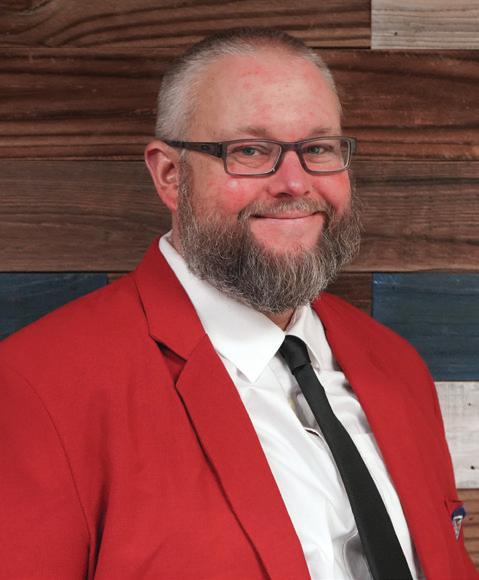
Lebsock also has helped develop some of his students for state and national offices within SkillsUSA.
Lebsock is currently working on his second master’s degree.
“John is a SkillsUSA champion with a true passion for helping youth develop the knowledge and skills that empower every student to achieve career success,” said SkillsUSA Executive Director Chelle Travis. “His passion and dedication to SkillsUSA and career and technical education is inspiring.”
She added that she struggled with Van Hoek’s suggestion of asking humans to remove their bias from a situation, which is not possible.
She said she trusted the recommendation that involved teachers and if Van Hoek’s statement is “I don’t trust teachers. then we get nowhere.”
Waded added that if there’s an issue with the book later, it would be addressed.
“I think it’s difficult to find any company anywhere that is not going to be involved in politics some way,” she said. “Politics is life. Whether or not we ex-
see BOOK page 20









Anew clinic that offers autism diagnosis and applied behavior analysis therapy has opened in Gilbert.
Axis for Autism, at 2451 E. Baseline Road, aims to cut waiting times for autism evaluations while providing “lifechanging, evidence-based therapies to children and adults.”
“We always planned to offer a continuum of care that would support children and families throughout their journey,”
said founder/CEO Christine Ehrich.
“Launching ABA enables families to connect with highly qualified therapists right away rather than getting stuck on another long wait list and delaying care further.”
Applied behavior analysis is an evidence-based, individualized therapy that helps strengthen communication, social skills, academic performance and other functional skills “while also mitigating challenges that may interfere with day-today living,” Ehrich added.
Axis for Autism’s board-certified behav-
ior analysts have worked with thousands of children and adult, she added, and can help individuals of any age improve a broad range of skills.
“They work in partnership with families and caregivers to create specific goals and help individuals engage more fully in the environments where they live, learn, work and play,” Ehrich said.
“We took great care to build a talented and experienced team of people with a true passion for their work and the families they serve,” said Jessica Reese, vice presi-
dent of clinical services for Axis for Autism.
Axis for Autism’s services begin with a functional behavioral assessment to evaluate strengths and skills deficits or behavioral excesses.
Providers work in tandem with parents and caregivers to create an individualized care plan to help the child succeed.
Physicians can make a referral to Axis for Autism for autism evaluation or ABA therapy, or families may contact the clinic directly.
Information: axisforautism.com.
ects that we are slated to move forward with if we have additional funding, one being Williams Field. That’s the next one as well as Sossaman and Cooley (middle schools). We want to continue to enhance these public rights-of-way and make them safer for all.”
According to Moore, the increase to the primary property tax is estimated at 16


cents per $100,000 assessed valuation of a home. He said the average home value in HUSD’s boundary is $350,000 and that property owners would see close to a 50cent increase next year on their property taxes.
Board member Amanda Wade said she is willing to pay the extra 50 cents to ease traffic issues on Higley, Pecos and Recker roads. Avoiding the stop-and-go traffic would save gas money, she added.
DOCKET NO. FD 36501, Union Pacific Railroad Company - Construction and Operation Exemption - In Maricopa County, AZ
The Surface Transportation Board’s (Board) Office of Environmental Analysis (OEA) announces the availability of a Draft Environmental Assessment (EA) for public review and comment. The Draft EA analyzes the potential environmental and historic impacts of approximately 6.0 miles of new rail line in southeastern Mesa, Arizona. Comments are due to the Board by June 30, 2023.

The Draft EA is available on the Board’s website, www.stb.gov, by clicking “Search STB Records” and searching for “Decisions” using docket number “FD 36501.”
To learn more about the proposed rail line and the Draft EA, please visit: bit.ly/3pNXz9s.
She said many residents do not see the benefit of these taxes if they don’t have children attending HUSD schools but they could be sold on the idea if they know it funds projects that would improve safety and traffic flow.
“People in the area don’t like bonds, don’t like overrides and don’t like to be taxed,” member Anna Van Hoek said, asking if there were alternative funding sources.
BOOK from page 18
pand the road to accommodate traffic is ultimately political.”
She said a decision on a textbook based on what board members expected from a company didn’t serve the students.
“We are never going to find a company that is all going to meet everyone’s desires up here …because we all have differences, we all have different views, different perspectives, different day-to-day lives,” Wade said, adding:
Moore responded that the district could reduce the capital and the maintenance and operations budgets.
Van Hoek asked if the Town of Gilbert could help pay for the projects. Moore said that HUSD works closely with the town on various grants.
“We did apply for close to $2 million in different grants that would help some
see LEVY page 21
thing that teachers thought they can successfully use.
Van Hoek responded that “the organizations’ beliefs impact what they are putting out – the product that they are providing that we are purchasing.”
“We should look at what is the product you have in front of us. Whether or not they support cultural development is irrelevant to a conceptual physics book if that book meets our need.”
“Ultimate it comes down to CRT,” Van Hoek said. “Are they in-putting any type of that information into the product is the problem. The whole point is don’t bring your politics into our textbooks and unfortunately, it’s happening.
Richards said that the teachers’ feedback “is important as we value them as the professional educators.”


“We should look at what is the product you have in front of us. Whether or not they support cultural development is irrelevant to a conceptual physics book if that book meets our need.”
Wade reiterated that the recommended textbook met the district’s needs, met curriculum standards and was some-
“They’re the experts,” she said. “And I personally trust them and I believe the cabinet trusts them and I believe you all want to trust them, too. I want our teachers to have what they need to be successful.”
of this funding,” he said. “We were not awarded any of those in the first round.”
Van Hoek asked if it was possible to push the town for support before the board voted to approve the levy.
Moore said the district certainly could do that but he highly doubted that the town would “change their tone over the next couple of weeks.”
Vice President Michelle Anderson asked when construction will move forward if the board approved the levy.
“Currently we don’t have enough funding to proceed with that,” Moore said. “We have started with the initial preliminary civil engineering in terms of analyzing where we can go, what are our options.”
Some of the highlights in the proposed budget include:
• No aggregate spending limit on the budget in the coming fiscal year after the Legislature passed a one-year exemption. The spending cap will return in 2024-25.
• A 2% pay increase to certified, classified, exempted and administrators and $1 an hour hike for classified hourly workers.
• $3.4 million in capital dollars from the governor’s budget that will go toward safety and security projects and major maintenance projects. Gilbert Public Schools received nearly $8.8 million.
The board voted 3-1 on the budget and levy with Van Hoek voting against it and Anderson, Wade and President Tiffany in favor. Board member Kristina Reese was absent.
Gilbert Public Schools Governing Board also last week discussed its proposed $274-million maintenance and operations budget for the fiscal year beginning July 1. It doesn’t include $12 million in budget balance carry forward.
The proposed budget maintains salary competitiveness with a 3% increase for teachers and administrators and $1-anhour hike for hourly workers, maintains safety and security personnel as well as $2 million for class-size reduction, according to Bonnie Betz, assistant superintendent of business services.
The budget also assumed a loss of 400 students. Budget adoption is scheduled for June 20.




She was born Norma Fay Sossaman to Monterey and Dwight Sossaman of Chandler, AZ.
She grew up in Chandler and attended Chandler High School. She married F Roy Dobson Jr, son of Roy SR and Pauline Dobson, on September 15, 1950. They farmed west of town. Were active in the community and ran cattle and raised three children. She loved hunting with Roy and her brother Dwight Sossaman, picnicking in our beautiful deserts and water skiing on Canyon Lake.
After Roys death in 1970 she later married Don Toci. They then moved to Mattawa, WA. They had a large farm of alfalfa, fruit orchards, and grape vines. Norma was a very fun loving, happy, and generous person, with a strong christian faith. She will be greatly missed.
She is survived by her 3 children; Paula Fay (Dobson) Wik, Tammara Gay (Dobson) Smith, F. Roy Dobson III, 8 grandchildren, and 11 great grandchildren.
Sign the Guestbook at: obituaries.EastValleyTribune.com






The Southeast Valley Branch of American Association of University Women hopes the community will help it provide basic necessities for struggling students at the Williams Campus of Chandler-Gilbert Community College and come by June 19 with donations.
e Coyote Cupboard at CGCC’s Williams Campus contains a variety of supplies available free to students who experience nancial hardships as they try to attend school while working and raising a family all at the same time.
“To address the need, Williams Campus sta strives to ensure that no one in their community goes without certain necessities that enable them to be successful in their academic endeavors,” the association said in a release..
Here is the list of items that our local AAUW Branch is collecting to ll the cupboard:
• Baby Necessities: Diapers, wipes, formula, onesies, bibs
• Household cleaning products: Lysol/ Clorox wipes, laundry detergent, dish
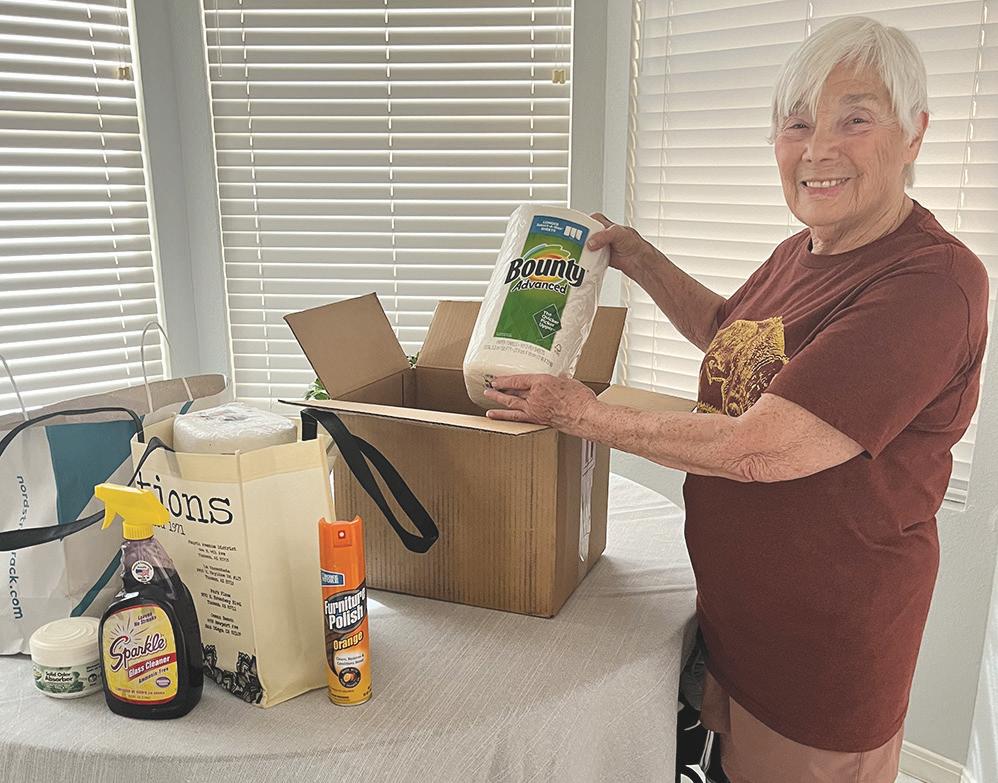
soap, paper towels, dusting cloths
• Basic hygiene: Soap, shampoo/conditioner, deodorant, towels, wash cloths,
feminine products, toothpaste, toothbrushes, dental oss, face cleanser/ wipes, sunscreen, lip balm, lotion
• Clothing kits (new items only): Socks, underwear, plain T-shirts, athletic/other shorts, sweaters, sweat pants
Bring donated items selected from the above list to Oakwood Library in the Oakwood community of Sun Lakes, 24218 South Oakwood Blvd. 5-7 p.m. June 19. Members of AAUW Southeast Valley Branch will be on hand to accept and bundle donations. People can feel free to stay and mingle.
AAUW is a diverse group that encourages participation by those who wish to advance equity for women and girls through advocacy, philanthropy, and research. It supports education and legislation impacting girls and women.
AAUW is a national organization open to all graduates holding an associate or equivalent, baccalaureate, or higher degree from a quali ed educational institution.
ere are more than 170,000 members across 1,000 local branches. e Southeast Valley Branch of AAUW was chartered in 1989.
Information: AAUW.SEV.AZ@gmail. com.
Rescue dogs usually come with a not-so-happy back story. So, they are not for everyone.
“Over the last few years, even just the last two years, I’ve noticed a huge shift in how people view rescues,” said Quinn Borchardt, who manages the Arizona Animal Welfare League (AAWL) Adoption Center at the Chandler Fashion Center.
“We do get people who are still wary about rescuing,” Borchardt said, “but are starting to change their minds
about getting a rescue animal versus a puppy mill.”
Rescue dogs could be older, they may have been abused, and they may lack the social skills families are looking for.
e AAWL Chandler location is raising the money it needs to replace the kennels. Alessandra Navidad, AAWL’s president and CEO, says it needs $105,000 and has raised about $40,000 so far.
“ ere’s many of them that are unusable,” Navidad said of the kennels. “It just means we can’t have as many animals up for adoption. We can’t put those animals in those kennels.”



When Queen Creek residents Tim and Vanessa Shively bought the Slumber Shack business, they were just thinking about making some money outside of their day jobs, hers as a teacher and his with a nonpro t.
“I bought the company because I thought it would be a fun way to supplement my income nights and weekends,” Vanessa said. “Well, the company has evolved and I could no longer work full time.”
e business consists of two modi ed travel trailers used for birthday parties or neighborhood events and high-end camping trips for people who want to get into nature but have a comfortable place to sleep at the end of the day – also known as “glamping,” short for “glamorous camping.”
Slumber Shack has gone to another level.
“We actually had to move,” said Vanessa. “We had to buy another home that had a double RV garage so this is more of a sustainable business for us. ese trailers are a big investment for us and now that it’s on our property we can balance our lives and the business more e ciently.”
e Shivelys bought the business for about $70,000 and then remodeled the trailers to re ect their style, keeping it based in Queen Creek.
While they knew it was a big investment, Tim Shively had no idea how much this business would take on a life of its own.
“ e intent was to get out of that 9-5 routine that a lot of us fall into,” he said. “We tried to create a di erent path.”
Now they are just trying to keep up.
When they rst bought the business, the Shivelys stored the trailers 20 minutes from where they lived, which added a whole different dimension to planning and logistics.
For example, if they were preparing for a birthday party, they had to remember to bring everything they needed when they left their house to go prepare the trailers

and try to cram it all in their vehicles. at becomes quite a task when prepping two trailers for one weekend.
“One sleeps 10. One sleeps seven,” Tim Shively said. “You have 17 sheet sets and pillow cases and blankets and then you had to pack the décor for the week, so you had to take like 15 pink pillows.”
ey did not have the trailers hooked to electricity when they were stored at the old location, he said, which meant dragging a generator along to hook them up to air conditioning to cool them down prior to using them.
So, it was time to make the move.
“We talked to other business owners who would say ‘until you invest everything into it, you can’t reap the full bene ts of it,’” he said.
“Having them at home has helped with that work-life balance,” he said. “Two of our boys still live at home and actually help us on the weekends. ere are times I need them to go pick up one of the diesel trucks we use to haul these things because I can’t get to it.”
About those diesel trucks. Storing the trailers at their new home in the full-scale RV garages has de nitely saved transport and planning time and helped with the logistics, but it has not made much of a




how everything works so that you are comfortable to stay in the RV. en when you are done with your trip, we meet you, pick it up and take the mess away.”
dent in the fuel and maintenance costs that come with the trucks and the trailers.
So they try to be strategic with their service area.
“We are primarily trying to focus this in the East Valley,” Tim said. “From the hauling them and opening and closing them as often as we do, we do a lot of maintenance behind the scenes so we like to keep them as close to where we are based as possible.”
“Every time something breaks, it’s like $1,000,” Vanessa added.
Overnight birthday or block parties start at $495 and three-day, two-night camping trips at $595. e company delivers the trailer to the location and picks it up afterwards.
e customer is required to get their own approved camp site. Tim said they will travel to Canyon Lake in addition to state-approved camp sites nearby.
e couple custom-decorates for each event.
“ e Shack comes fully equipped with karaoke and a smart TV and games, and decorated based on the theme of your party,” Vanessa said. “For glamping trips it’s really nice because we just want to help people get outside.
“We do all the hard work: Tow the camper, set it up, give you a tour and show you
While the Slumber Shack is available for di erent events, one in particular stands out to the Shivelys since having taken the business to the next level a little over a year ago.
A single father approached them about making his daughter’s 10th birthday a special occasion.
He called the Shivelys and asked “what can you do for her?”
“He was at a loss but you could see that he loves her so much he wanted to make it special,” Vanessa said. “ e little girl was just so excited and it was really memorable for her. e way that she looked at her dad when she realized everything that he had done for her made it all worth it for us.
“It brings us a lot of joy to take that stress away from people.”
e Shivelys say those are the types of stories that make the business more than just a pro table investment, but also proves its mettle as a positive small business in Queen Creek.
Despite the fuel and maintenance costs, uprooting their family and logistics challenges, the Shivelys are optimistic about the future.
“We’re busy,” Tim chuckled. “We’re always dragging two, 30-foot trailers through the East Valley.”
Information: theslumbershack.com, 480-599-0421.
If the tragic e ect of our nation’s new approach to car safety has a face, it’s that of 27-year-old Anton Yelchin.
Seven years ago, the “Star Trek” actor died when his 2015 Jeep Grand Cherokee rolled backward in the steep driveway of his Los Angeles home. e vehicle pinned Yelchin against a brick fence, crushing him to death.
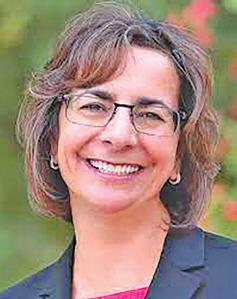
ese regulations essentially limit the driving experience to “best practices” to keep us safe. ese traditional strategies focus mainly on improving mechanical parts. But over the last decade, our cars have changed. Today, they look more like computers on wheels.
software or other faults deep in the electronic systems of the vehicle.
More than a decade ago, the National Research Council predicted this problem due to the shift from mechanical systems to electronic ones.
our modern carriages.
And the human cost of the current recall strategy, which is most like complaining after an unsound horse has left the barn, is too high. Drivers like Yelchin deserve better.
Yelchin evidently thought that he had placed the vehicle in park before stepping out of the driver’s seat. But the parking gear was not engaged. e accident occurred just weeks after Yelchin’s vehicle was recalled for a defective electronic gear shift. e solution was a software update, but his Jeep had not been xed yet.
For years, car safety improved due to two main strategies: the carrot or the stick. But by the time of Yelchin’s death, car owners had unknowingly entered a new era: safety by recall.
e federal government designed its 5-Star Safety Rating system as a way to reward carmakers for improving the crashworthiness of cars.
e idea was to put the carrot in the hands of the consumer. If a vehicle had more stars, then more consumers would buy the car, prompting the automaker to produce safer cars. It would be up to the carmakers to respond to these market forces.
On the other hand, government regulations are the stick. e carmakers must build over 40 safety regulations into their features.
You experience over 50 years of regulations when you get behind the driving wheel, adjust your seat, reach for your seatbelt, adjust your mirror, press your foot on the brake pedal, and turn the key (or press the button) to start your motor.
Recalls mount as cars computerize Managing safety has also changed. Now, with the widespread and diverse technologies in cars, federal safety regulators are forced to rely more on recalls.
A vehicle recall occurs when either the manufacturer, regulators, or both determine that a defect exists. A defect involves an unreasonable risk of a crash occurring, or an unreasonable risk of death or injury in a crash.
e recall process requires collecting and analyzing data from consumers, manufacturers, and safety advocates. A recall occurs only after an in-depth risk assessment is completed.
e volume of recalls show that our federal regulators have been very busy. In 2010, more than 23.4 million vehicles were recalled.
at’s about 1 recall per 11 registered vehicles. A decade later, that number was close to 34.4 million recalls or one recall per ve registered vehicles. Today, more vehicles are being recalled and their defects are costing lives, injuries, and damages.
Before Yelchin’s accident, Fiat Chrysler Automobiles US LLC had collected some 700 reports potentially-related to the defective gear shift. ose reports included 212 crashes, 308 claims of property damage, and 41 injuries. No fatalities had yet been attributed to the defect. More than 800,000 people’s Chryslers, Dodges, and Jeeps were a ected by this recall.
It’s hard to investigate potential defects in newer vehicles because they entail possible failures in a company’s proprietary
We are currently seeing this prediction come true. It will be harder and harder for regulators to identify such problems before they cause deaths and injuries. As the annual numbers sited about indicate, there is a lot at stake. No wonder the investigations and arguments between the regulators and carmakers are contentious.
As a nation, we need to devise a new way to build safety into our computers on wheels. Apparently, the carrot or stick system from the horse and buggy days can’t keep up with the safety requirements of
If you have a car problem and would like to notify the federal regulators, you can go onto the website: nhtsa.gov/report-a-safety-problem#index.
Ahwatukee resident Norma Faris Hubele is professor emerita of Arizona State University and creator of eAutoProfessor.com, a website that helps families make safer car choices. Her book, “Backseat Driver, e Role of Data in Great Car Safety Debates” was published in August by Routledge.


The play – a 46-yard touchdown reception as time expired against USC – was so memorable it earned its own nickname.
e Jael Mary.
But former Arizona State and NFL wide receiver Jaelen Strong hopes to be de ned by more than two standout seasons in Tempe and an unforgettable 2014 catch. He wants to make a di erence for young athletes in the Valley.
rough his new athletic and academic youth organization, 602Era, Strong is committed to providing opportunities through sports for young athletes. e organization features teams in 7v7 football, basketball, baseball and track and eld for students in elementary school through high school. He eventually hopes to create an IMG-like academy in Arizona.
While it’s a business, Strong hopes the lessons learned are far-reaching.
“We are trying to teach kids how to challenge themselves and develop constantly no matter what. e goal is to get kids to college for free through sports,” Strong said. “ e foundation of 602Era is creating a network of alumni who will learn through years of being in the program and return to give back to the youth in the community. It’s a ‘reach one, teach one’ type of thing.”
Strong, alongside an elite team of former athletes and trainers, formed the business in January with the goal of becoming Arizona’s most prominent youth athletic organization.
Four months into the process, Strong has attracted youth from all over Maricopa County, including 34 two-sport athletes from eight high schools, some of which in the East Valley.
“I started 602Era because that is the area code of Phoenix and I wanted people

ham in his two seasons at ASU, Strong credits his former coach with implementing an environment that prioritized growing just as much o the eld as on it.
Former Clemson tight end and 602Era assistant coach D.J. Greenlee built a relationship with Strong after his cousin and all-pro receiver DeAndre Hopkins introduced the two when he was his teammate on the Texans. e two have stayed friends since and Greenlee was one of the rst people Strong called when recruiting coaches to 602.
Since then, Greenlee has been instrumental in establishing the 7v7 football teams for the various age groups. Just like Strong, Greenlee wants to “instill in these guys what I’ve been instilled from my past coaches and coach Dabo Swinney at Clemson.”
Still, the primary goal for Strong, Greenlee and the rest of the 602 team is to provide the best leadership and training possible to help their players achieve their goals of playing at the next level.
he’s obviously done it. He’s been to the league. He’s been in college. He’s done everything that we all hope to do,” Beckham said.
Strong, who grew up in Philadelphia and played at Los Angeles Pierce College before the they next step to Power 5 football, frequently shares his story of determination and following in his dreams.
“He tells us a lot about his upbringing, how he ended up at JUCO and then ASU,” Beckham said. “He uses his story to motivate us. And even if we do go to JUCO, we know we can still make it big.”
Strong’s motivation is to o er an alternate route to learn and thrive under professionals who have had success in athletics and o the eld.
His coaching days are just getting started, but he already has big plans for the future.
“I’m going to open a school,” he said. “It’s been in the back of my mind for a while, and it is the next step in how I want to impact the youth.”
to know that when we leave the area that we are from Arizona,” Strong said.
“ at way it gains that activation of the Valley that coach (Kenny) Dillingham at ASU is trying to incorporate. I want to create that great relationship through 602Era with the community, Arizona State and all other colleges across the country.”
Installing foundational values and shaping the young athletes into better people has been the highlight of the rst few months, Strong said.
He believes his model of six pillars, no excuses and two places (school and playing eld) will set the standard for what it takes to be successful. He expects every athlete who joins 602Era to adhere to the expectations of the pillars and demonstrate the same work ethic on the eld and in the classroom.
e creation of the six pillars ideology was inspired by former Arizona State coach Todd Graham. Playing under Gra-
He already has organized visits to the ASU and UNLV football programs while setting up camps and introducing his connections in the football world to his players.
Maren Pellant, the mother of 602Era player and Hamilton High School quarterback Beckham Pellant, believes that in the few months her son has worked with Strong, she has seen his skills develop and has watched him become more mature and focused o the eld.
“He’s done grade checks and holds them accountable. He just wants the best for them,” she said. “He wants them all to play at the next level. So, he’s going to do everything he can to coach them up to that level so that they succeed.”
Beckham values Strong’s experience and knowledge and hopes it will put him in a better position heading into his senior season.
“He’s a great guy to look up to. I mean,
Strong wants to establish an “elite type of IMG school in Arizona,” Greenlee said, and build a curriculum that better prepares kids for college and a career in professional sports.
Whether it is training kids on the eld, running an athletic organization or taking the steps to build a school, Strong has committed himself to using his platform for the betterment of future generations.
Although the ASU great will never be forgotten for the e ect he had on the eld, the legacy he is building o it is what pushes Strong to continue to leave his mark in the Valley.
“ e kids know that they make my life so much better,” he said. “ ey give me a purpose to wake up every day and keep pushing.
“As long as I’m servicing the kids and I’m reaching one and he reaches another, that’s the only thing that matters to me.”







When it was launched on Broadway in 1960, “Bye Bye Birdie” was the rst musical with a rock’n’roll in uence.
Now, Eas Valley theatergoers can enjoy this lively musical with popular songs through July 1 at Hale Centre eatre in Gilbert.
“I like it because it’s nostalgic. It’s a little snapshot of the time period and based on true events,” said Cambrian James, who is directing and choreographing the play for the second time at Hale. “We are not solving any of the world’s problems with it; it’s just a good time, fun music and fun dancing.”
Originally conceived by Michael Stewart with music by Charles Strouse and lyrics by Lee Adams, the captivating storyline of “Bye Bye Birdie” revolves around the wildly popular rock ‘n’ roll heartthrob Conrad Birdie, loosely inspired by Elvis Presley.

When Birdie receives his draft notice, his agent, Albert Peterson, and his secretary, Rosie Alvarez, concoct a plan to generate one last publicity stunt that will make Birdie’s farewell unforgettable.
ey choose a lucky girl from Sweet Apple, Ohio, Kim MacAfee, to receive Birdie’s last kiss on “ e Ed Sullivan Show.”
e good-looking singer, who has a trail of girls fawning over him, manages to turn the quaint old town upside down and, in the process, create a vibrant comedy.
e music, including beloved songs such as “Put on A Happy Face,” “Spanish Rose” and “A Lot of Livin’ To Do,” is directed by Lincoln Wright.
e cast of 24 drawn from across the Valley features Tyler Brignone as Albert and Michala Montano as Rosie in the lead roles.
e story brings out Albert’s domineering mother who does not approve of the match.
“ ey are excellent,” James said of the two leads. “Michala’s voice is beautiful and her character is spot on.”
Hector Coris plays Albert’s father for the second time – he played the same role when Hale produced the musical 13 years ago.
Hale theater owner Dave Dietlein said that audiences are loving the show and giving it standing ovations.
“ e talent is so good,” he said.
Hale programs its schedule based on the time of year, Dietlein said. When winter visitors are around, the dramas and musicals tend to cater to them. After winter visitors return to their home states, the focus is on children, teens and families, and storylines to interest them.
Hale is presenting “Bye Bye Birdie” for the second time also because it is heavy on dance numbers and a musical comedy with teenage performers.
“It’s just the perfect type of show in the summer to bring everyone down and just

have a good night of laughter, of fun story lines and a great night out,” Dietlein said.
Recent changes to Downtown Gilbert have bene tted Hale theater. Weekends draw hundreds of people to the area.
“You can’t nd better restaurants to eat out than in downtown Gilbert and I think we have about 30 now within walking distance of the theater,” Dietlein said.
“ ere are ingredients for a perfect night – free parking, great restaurants, walk to the theater and see a great show in a safe environment. at’s what we o er.”
Gilbert’s plans to revamp the Water Tower Plaza with design elements, walking paths, led lighting and shade structures will also bene t Hale theater because of its proximity, Dietlein said.
e improvements are heartening because the theater went through a di cult period during the pandemic, which began soon after it received extensive renovations and refurbishments.
The theater experienced a mandatory shutdown for seven months, then operated at 38 percent capacity and afterward, a gradual comeback to nor-
malcy has prevailed.
“We lost a lot of people through the pandemic; they just haven’t returned since,” said Dietlein, whose business relies on season ticket signups.
Getting out of the habit of attending the theater, health issues, and even deaths have reduced audience numbers.
“We are still working on trying to get everybody back. e good thing is we are up and running, people are liking the shows, and we are picking up new people,” he added.
After “Bye Bye Birdie” closes on July 1, Hale theater presents “ e Beauty and e Beast” from July 7 to Aug. 19 to close out the season. e next season starts with “Something’s Afoot,” to run from Aug. 25 to Oct. 7.
“Steel Magnolias” return by popular request from Sept. 19 to Nov. 21.
Hale eatre is at 50 West Page Ave., Gilbert. Performances are on Wednesdays to Saturdays with select matinees. Details: For tickets, call the box o ce at 480-4971181 or visit Hale eatreArizona.com to order online.




























































































































